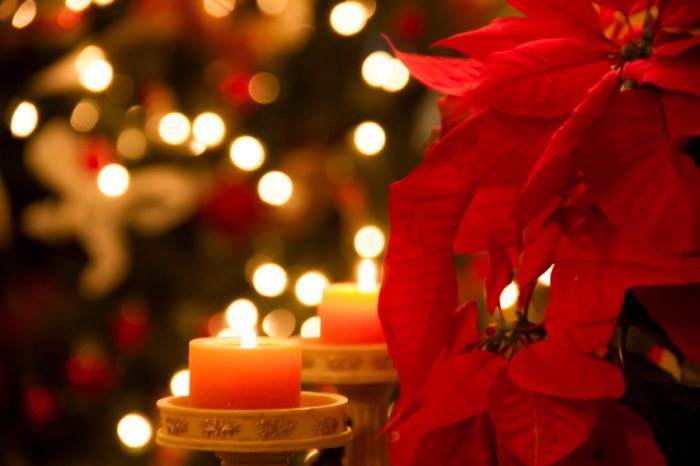
Everything You Need to Know About Poinsettias
Interesting facts about Poinsettias
Contrary to popular belief, poinsettias are not poisonous to humans. A study showed that a fifty pound child would need to consume 500 leaves in order to be sick. However, they taste terrible and would cause diarrhea and vomiting in your pets.
December 12 is Poinsettia Day, which marks the death of Joel Roberts Poinsett in 1851, an American botanist and physician who introduced the plant to the US in 1828. Poinsettias are native to Mexico, where Poinsett was a US ambassador. There, they are a perennial shrub that grows up to fifteen feet. Believe it or not, they were once considered weeds.
Though they symbolize Christmas in North America, poinsettias are not frost tolerant.
The colorful parts of the plant are not flowers at all. They are modified leaves. The flowers are the yellow buds in the middle of the bracts. Once the flowers shed their pollen, the leaves drop. So, if you’re looking for a plant to last the whole season, look for plants with less or no pollen showing.
The color of the leaves is created through a process called “photoperiodism,” a technique developed by Paul Ecke. This means that the plant needs 12 hours straight of darkness for a certain period of time. Though, once the color develops, they need abundant amounts of light.
The Paul Ecke Ranch located in California is now responsible for 70% of poinsettia sales in America. Before 1991, they had even more of this market because only they knew the secret technique that caused every seedling to branch. That method has since been discovered by others, decreasing their share of the market.
Caring For Your Poinsettia
Though the Poinsettia is the official Christmas plant, you must be sure that it is not exposed to very low temperatures for any period of time. You should even avoid letting it lean on or touch cold windows.
At home, unwrap your poinsettia and place in indirect light, ideally for six hours a day in a climate of 65-70 degrees during the day and 60-65 degrees at night. Temperatures any higher will shorten the life of your poinsettia.
Soil should always be damp. Be sure to put holes in the foil so water can drain and discard the excess water. If the plant wilts, the bracts will drop sooner.
Fertilize with a houseplant fertilizer if you wish to keep your poinsettia past the holiday season. With good care, it will last from 6-8 weeks in your home.
How to make Poinsettias bloom again next Christmas?
In February or early March, it’s time to cut each of the old flowering stems back to 4 to 6 inches in height. Leave one to three leaves on each stem. The new growth will come from the buds on the leaf axils. The buds will grow after cutting the plant down.
The plant needs to be kept in a sunny spot at a temperature between 60 and 70 degrees. Only water the plant when the soil feels dry, discard the excess water and apply fertilizer every 2 weeks.
In late spring, repot the plant into a bigger pot and add sterile growing mix. As soon as the spring frost has passed, the poinsettia can be put in a lightly shaded spot outside. Prune all shoots to about 4 inches in the first half of August, leaving about two leaves on each shoot. Continue fertilizing every two weeks.
Take the poinsettia indoors around Labor Day and reduce the amount of fertilizer. Starting around September 21st, the poinsettia needs to be kept in total darkness for 12 hours and 12 hours of bright light each day.
Until the bracts start showing color (late November, early December), put the plant in a sunny area with direct light. Reduce water and fertilizer, keep the plant between 60 and 70 degrees and the poinsettia will flower for Christmas.